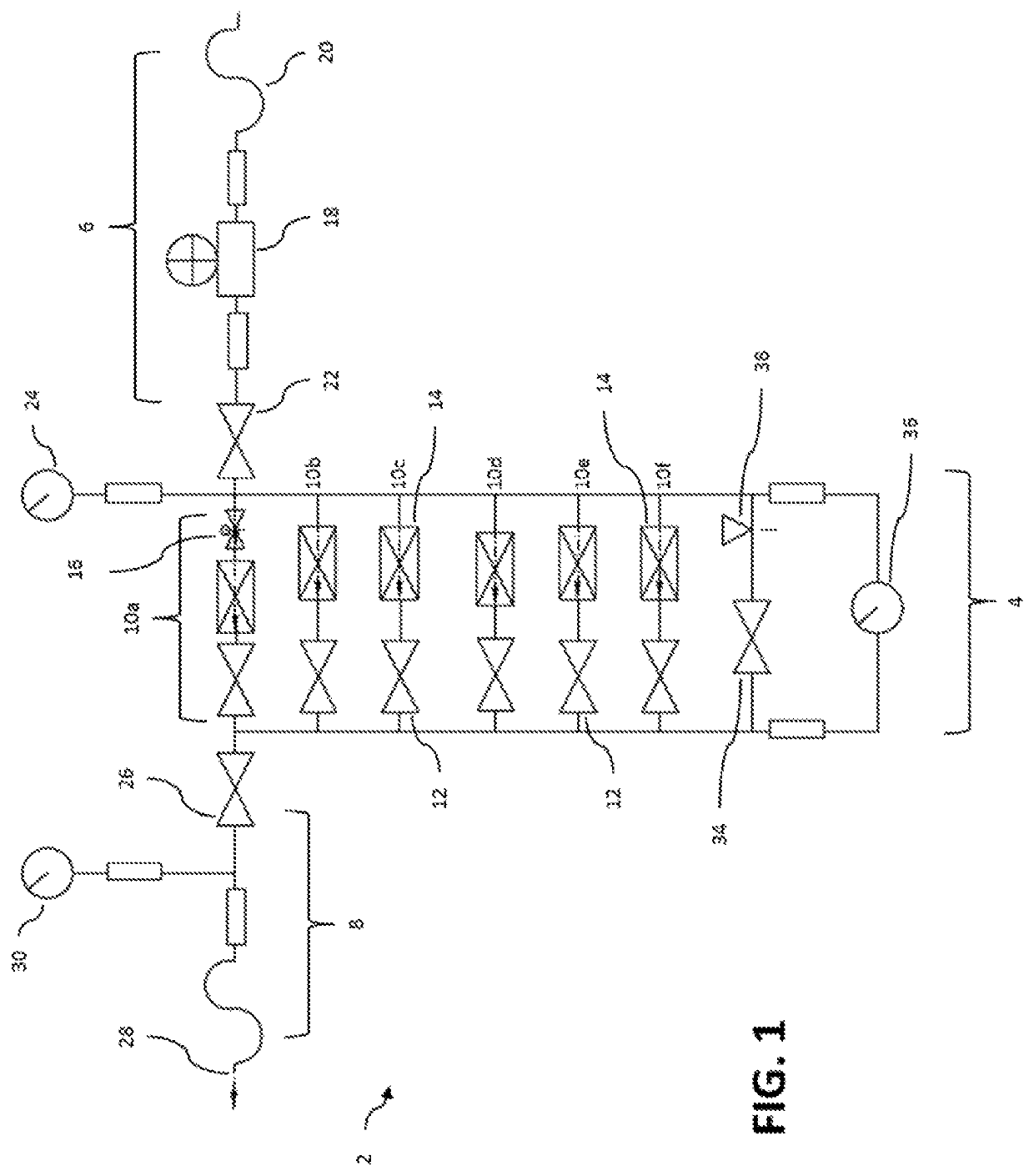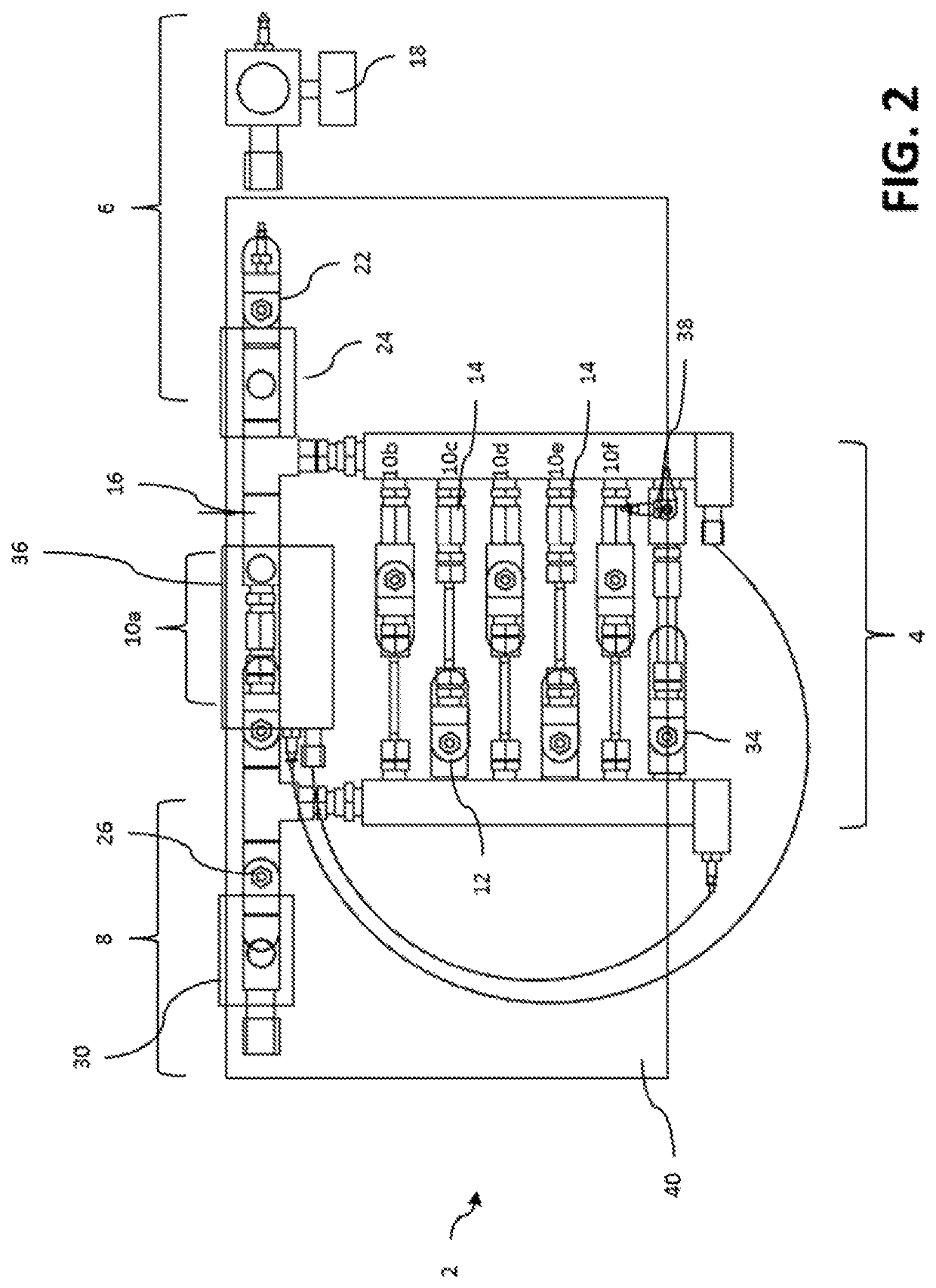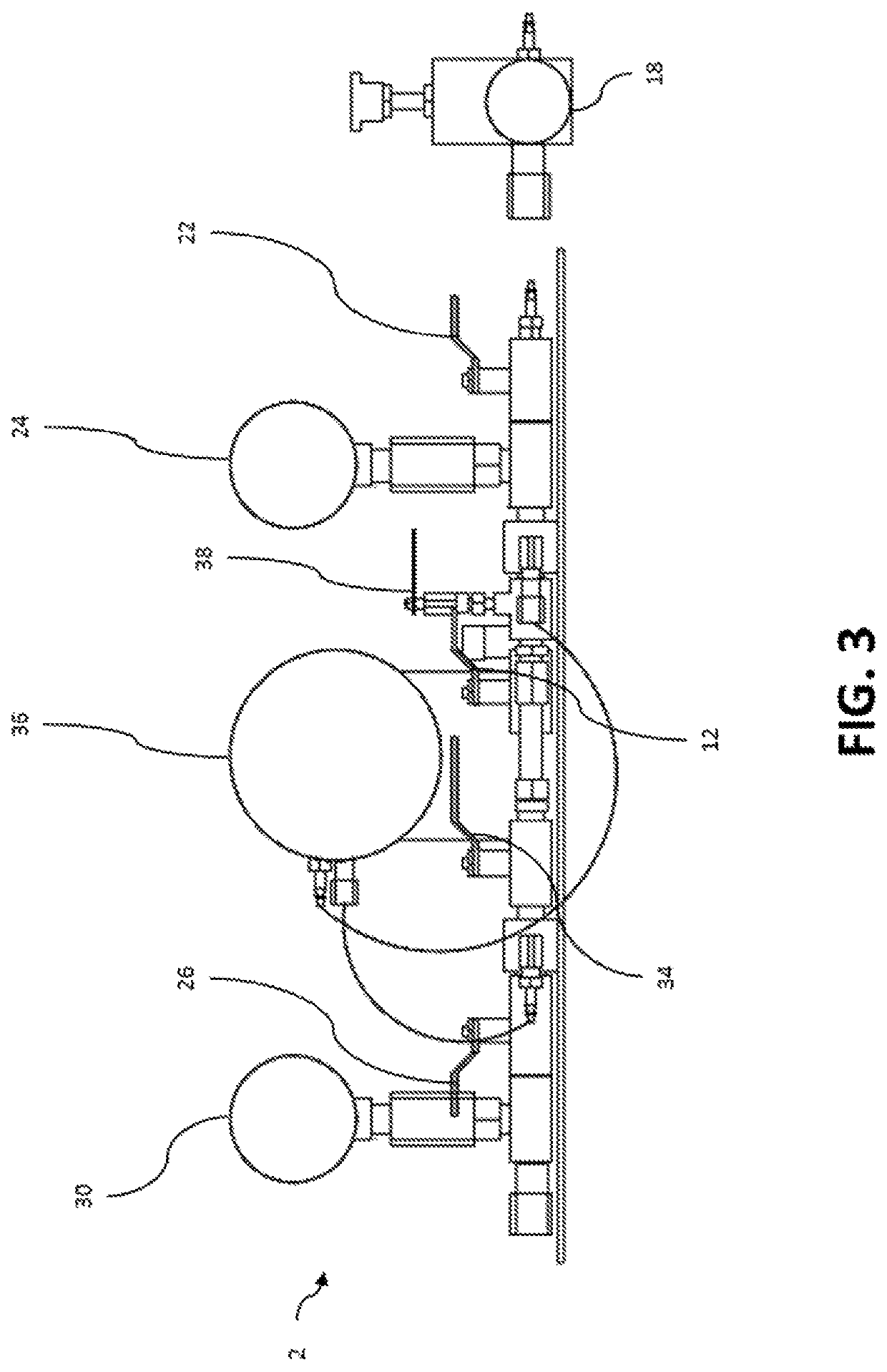Device, system, and method for detecting equipment leaks
a technology of equipment and leakage detection, applied in the direction of instruments, fluid-tightness measurement, and measurement of fluid loss/gain rate, can solve the problems of increasing hydrogen consumption, reducing dielectric strength, and damaging stator phase to phase or ground fault, etc., to achieve accurate measurement of leakage rate, reduce downtime, and reduce equipment requirements. cost and large equipment requirements
- Summary
- Abstract
- Description
- Claims
- Application Information
AI Technical Summary
Benefits of technology
Problems solved by technology
Method used
Image
Examples
Embodiment Construction
[0022]Generally speaking, the present invention is directed to a device, system, and method useful for accurately and expeditiously testing leak rates in hydrogen and liquid cooled electrical generator stator casings and armature windings of large industrial equipment, particularly steam turbine generators of all makes and sizes. In particular, the present invention is useful for and intended to be used for testing and quantifying leak rates in both liquid cooled generator stator windings (LCSW) and hydrogen cooled generator stator casings of steam turbine generators. The present invention utilizes Boyle's Law and Bernoulli's Principle coupled with laboratory and experimentally derived algorithms for measuring very minute leak rates using a specially manufactured high pressure differential pressure gauge and specially manufactured orifices for variable leak rates provided in stages. The algorithms are preferably incorporated into a computer-based form (such as an EXCEL spreadsheet) ...
PUM
 Login to View More
Login to View More Abstract
Description
Claims
Application Information
 Login to View More
Login to View More - R&D
- Intellectual Property
- Life Sciences
- Materials
- Tech Scout
- Unparalleled Data Quality
- Higher Quality Content
- 60% Fewer Hallucinations
Browse by: Latest US Patents, China's latest patents, Technical Efficacy Thesaurus, Application Domain, Technology Topic, Popular Technical Reports.
© 2025 PatSnap. All rights reserved.Legal|Privacy policy|Modern Slavery Act Transparency Statement|Sitemap|About US| Contact US: help@patsnap.com



